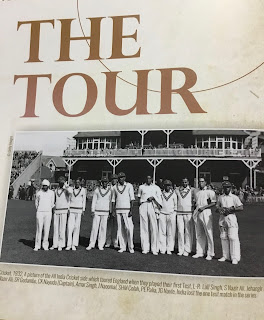Judgment Day for Team India : United we have stood amidst multitudes of diversity, and united we must
This day, 9th November, 2019 - the Indian 9/11- has witnessed two historical events - a landmark 1045 page judgement, which has been unanimously delivered by the Supreme Court bench, comprising of Chief Justice of India, Ranjan Gogoi and his brother judges, justices S.A. Bobde, D.Y. Chandrachud, Ashok Bhushan and S. Abdul Nazeer and an equally important opening of the Kartarpur corridor by the Indian Prime Minister from our side (who statesmanly acknowledged, recognised and appreciated his counterpart from Pakistan) and the Pakistani Prime Minister on the other side. Hopefully these two events are destined to bridge crevices between the two communities - Hindus and Muslims - in India and so also between the two warring states - India and Pakistan - and help the two communities and the two countries to look beyond and not behind.
Now that the apex court has delivered an unanimous verdict on the century old dispute, it is the bounden duty of all Indians to accept the Supreme Court judgement, irrespective of each of our prejudices, likes and dislikes and uphold the rule of law and bring finality to the divisive litigation, which had plagued India for long and divided people. What is most heartening is, barring a few aberrations, the whole of India has showed poise and maturity and an outstandingly nation first stand has been taken by the people to avoid any communal or other disturbances. What is more pleasing is the fact that all the leading political parties and their leaders and so also other leaders and influencers of Indian society, the litigants, media etc have accepted the Supreme Court Judgement, and have more or less collectively taken a stand to respect the decision of the Supreme Court and have also appealed to their followers to maintain unity and harmony in the country. It is also time for all of us to look beyond the century old litigation, and strive that much harder to exemplify the ‘Unity in Diversity’ for which this great nation of ours is known for thousands of years. The plurality of Indian democracy lies not just in the multi-religiosity that is integral to this nation, but so also the diversity that is seen in language, traditions, food, culture etc., which is what India is made of.
Central to the beauty and vibrancy of the Indian democracy are the diversity of the Indian electorates - Hindus, Muslims, Parsis, Sikhs, Christians, Jains, Buddhists, religious and non religious, the rich and mighty, the powerful and powerless, the poor and the insignificant, the lettered and unlettered, sheltered and unsheltered, the males, females and the transgender’s, the believers and non believers, young, middle aged, old and the very old - all of them cohabit the nation and stand as equal citizens. The Indianness of the people and their unity in diversity is an age old tradition which can best be seen in the Cricket team that represented India, when it made its debut in the international test cricket in 1932.
India was baptised in to International Cricket in 1932, when they played against England in England. The unity in diversity that India is known for was witnessed in the team that represented India in the Inaugural Test. The team selection for India’s maiden test debut was shrouded in controversy and mystery. Despite all the intrigue over captaincy and team selection, a young Indian side of 18 members was selected for undertaking their inaugural international tour to England in 1932. The All-India team that was selected to travel to England, was a microcosm of the diversity that constitutes this great nation. The Indian team was a team of contrast with diversity in socio, religious and cultural practices. The 18 players spoke eight to ten different languages among them, and belonged to four or five different castes. The team was truly multi-religious and consisted of six Hindus, five Muslims, four Parsees and two Sikhs. The players also had their own contrasting beliefs and cultural traditions and practices. The Muslims forswear alcohol by religion and most of the other members did so by choice. The Sikhs, who played cricket in turbans, similarly forswear smoking by their religion. The Hindus foreswear not to eat beef, and the Mohammedans pork and ham, due to their religious beliefs and practices. The team with just eighteen members had so much of diversity in terms of religion, customs and traditions, yet they remained one as Team India. The Indian cricket team, notwithstanding their diversity, played as one nation and administered few shocks to the dignity and confidence of team England - which had just beaten the mighty Australian team that was led by the legendary Don Bradman - when they rattled them in the initial period of the game.
The extraordinary unity which was witnessed among the players who were divided in religion, culture, traditions and language is what must become a beacon for the whole of India today as we move towards post Ayodhya verdict. In the context of the narratives that may get played out by some divisive forces, in the days and months to come, which may try and divide us and create violence, it is hoped that the extraordinary unity and spirit that team India exhibited in 1932 repeats all across the country. It is further hoped that the country leaves behind this issue, which was dividing us, and move forward as one nation towards a better India.
Jai Hind
stand.














No comments:
Post a Comment